Repair help
Whirlpool Dishwasher Not Starting? Here's What to Do
AZparts Team
Updated on July 30, 2025
10 min read
No one wants to come home to a sink full of dirty dishes because their Whirlpool dishwasher suddenly won’t start but the good news is, this common issue can often be fixed without calling a technician. Whether the problem lies with the power supply, control panel, or mechanical components, identifying the root cause is the first step to getting your appliance back in working order. In this article, let’s join AZParts to explore the most common reasons why your Whirlpool dishwasher won’t start and discover practical solutions to help you get your kitchen back to its clean and tidy state in no time.
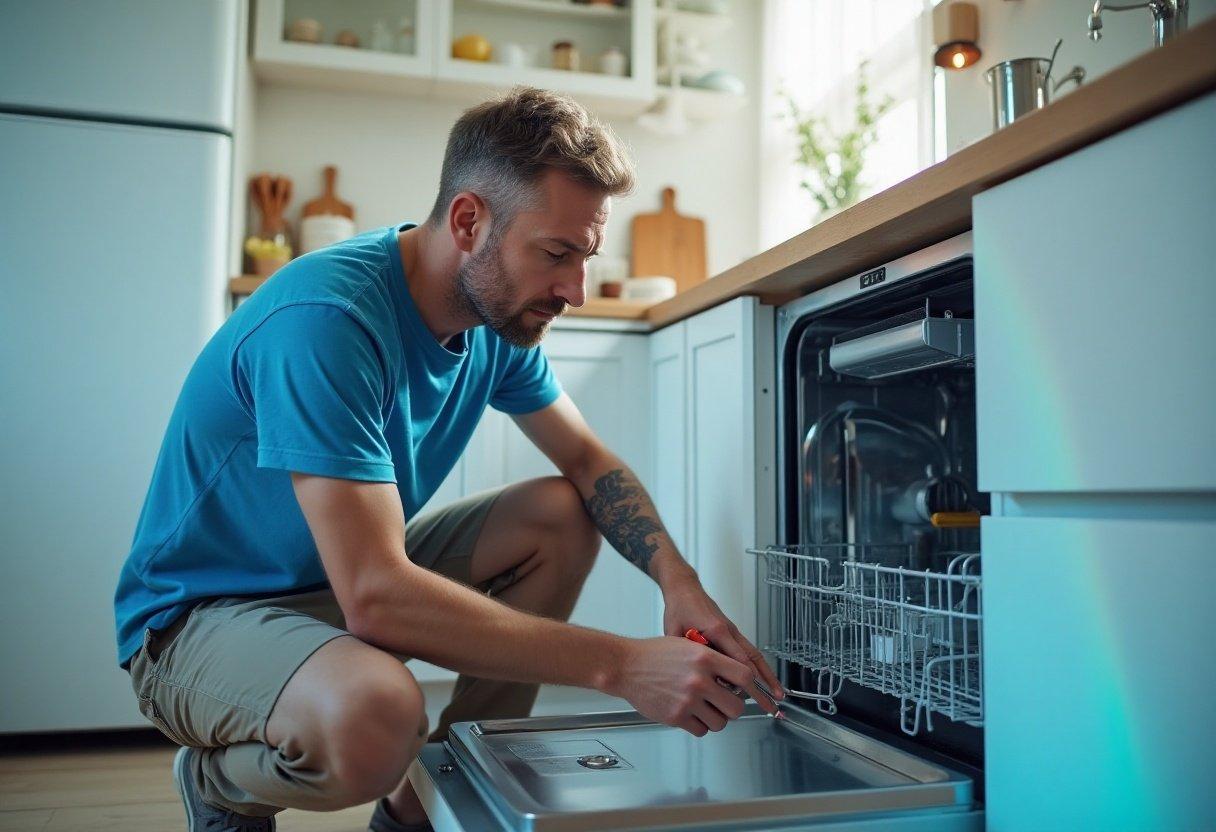
1. Check These Basics First
Before diving into complex troubleshooting procedures, it's essential to verify the most fundamental requirements for your dishwasher to operate properly. These basic checks can save you time and effort, as they address the most common oversights that prevent dishwashers from starting.
Power Connection: First, ensure your dishwasher is properly connected to a power source. If it uses a standard plug, check that the cord is securely plugged in and the outlet is working by testing it with another appliance. For hardwired models, inspect your home’s electrical panel to rule out any power supply issues.
Circuit Breaker (CB): A tripped circuit breaker is a common reason why your dishwasher won’t start. Locate your electrical panel and check if the breaker controlling the dishwasher has been tripped. If so, reset it by switching it completely to the “Off” position, then back to “On” to restore power.
Door Latch: The dishwasher door must be fully closed and properly latched for the machine to operate. Even if the door looks shut, it may not be securely locked, which will prevent the cycle from starting. Double-check the latch to ensure it clicks into place.
2. Common Reasons Why Your Whirlpool Dishwasher Won't Start
Understanding the various factors that can prevent your Whirlpool dishwasher from starting will help you identify and address the specific issue affecting your appliance. These problems range from simple user errors to more complex mechanical or electrical failures.
2.1 Control Lock Is Activated
The control lock (also called child lock) prevents unintentional use of the dishwasher. When enabled, it disables all buttons, making the machine seem unresponsive.
Solution: Look for a lock icon or light on the display. To disable it, press and hold the "Control Lock," "Start," or "Cancel" button for a few seconds, check your manual for the exact combination.
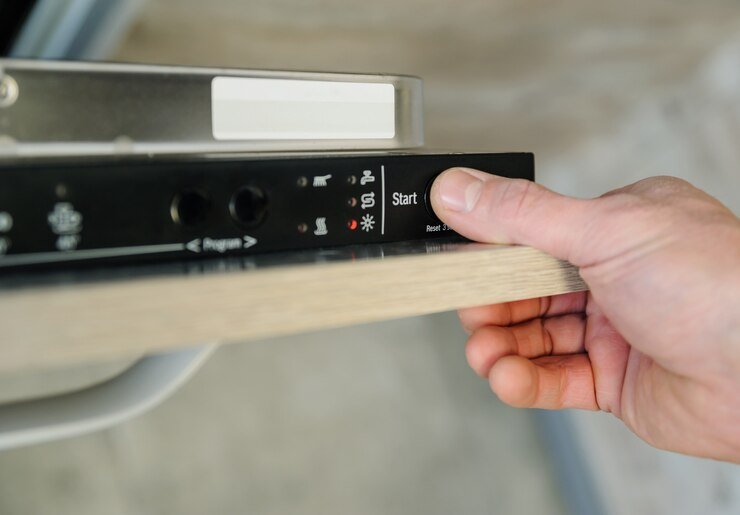
Holding the button “Start” for a few seconds (Source: Freepik)
2.2 Delay Start Is Set
If Delay Start is turned on, your dishwasher won’t begin washing right away. This feature lets you schedule a cycle for later, but it can be confusing if activated accidentally.
Solution: Check for a countdown or delay symbol on the control panel. Press and hold the “Delay Start” or “Cancel” button to turn it off and allow immediate operation.
2.3 Door Isn't Properly Latched
The dishwasher won’t run if the door isn’t securely latched. This can happen due to misalignment, dirty seals, or a faulty latch mechanism.
Solution: Clean around the latch and check for food debris. Make sure the door clicks firmly shut. If the door seems closed but the machine won’t start, the door sensor might need servicing.
Solution: Clean around the latch and check for food debris. Make sure the door clicks firmly shut. If the door seems closed but the machine won’t start, the door sensor might need servicing.
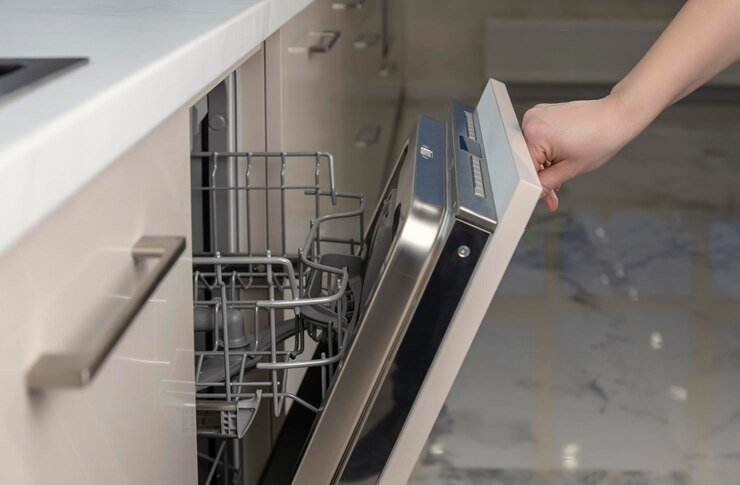
Dishwasher door not closing properly (Source: Freepik)
2.4 Water Supply Issue
The dishwasher needs a steady water supply to operate. A closed valve, low pressure, or clogged water inlet can stop the machine from starting.
Solution: Check if other faucets in your home have water. Make sure the supply valve is fully open. Listen for a click or hum when the machine starts—if not, the inlet valve may be blocked or faulty.
2.5 Blown Fuse or Tripped Breaker
Internal fuses or thermal switches protect the dishwasher from damage but can stop it from starting if tripped. This may be caused by power surges or overheating.
Solution: Check your breaker box and inspect the cord for burns or damage. If the fuse is blown or the thermal switch is tripped, it might require a technician to replace or reset it safely.
Solution: Check your breaker box and inspect the cord for burns or damage. If the fuse is blown or the thermal switch is tripped, it might require a technician to replace or reset it safely.
3. How to Troubleshoot a Whirlpool Dishwasher That Won't Start
Systematic troubleshooting helps you identify and resolve the specific issue preventing your dishwasher from starting. Follow these steps in order, as they progress from simple solutions to more complex diagnostic procedures.
3.1 Step 1: Reset the Power
Turn off the dishwasher from the control panel, then unplug it or switch off the circuit breaker. Wait at least 5 minutes to allow the system to reset. During this time, inspect the power cord for any damage or loose connections. Afterward, restore power and try starting a wash cycle. This basic reset can often fix minor electronic glitches and restore normal operation. If it starts successfully, monitor a few cycles to ensure the issue doesn’t return.
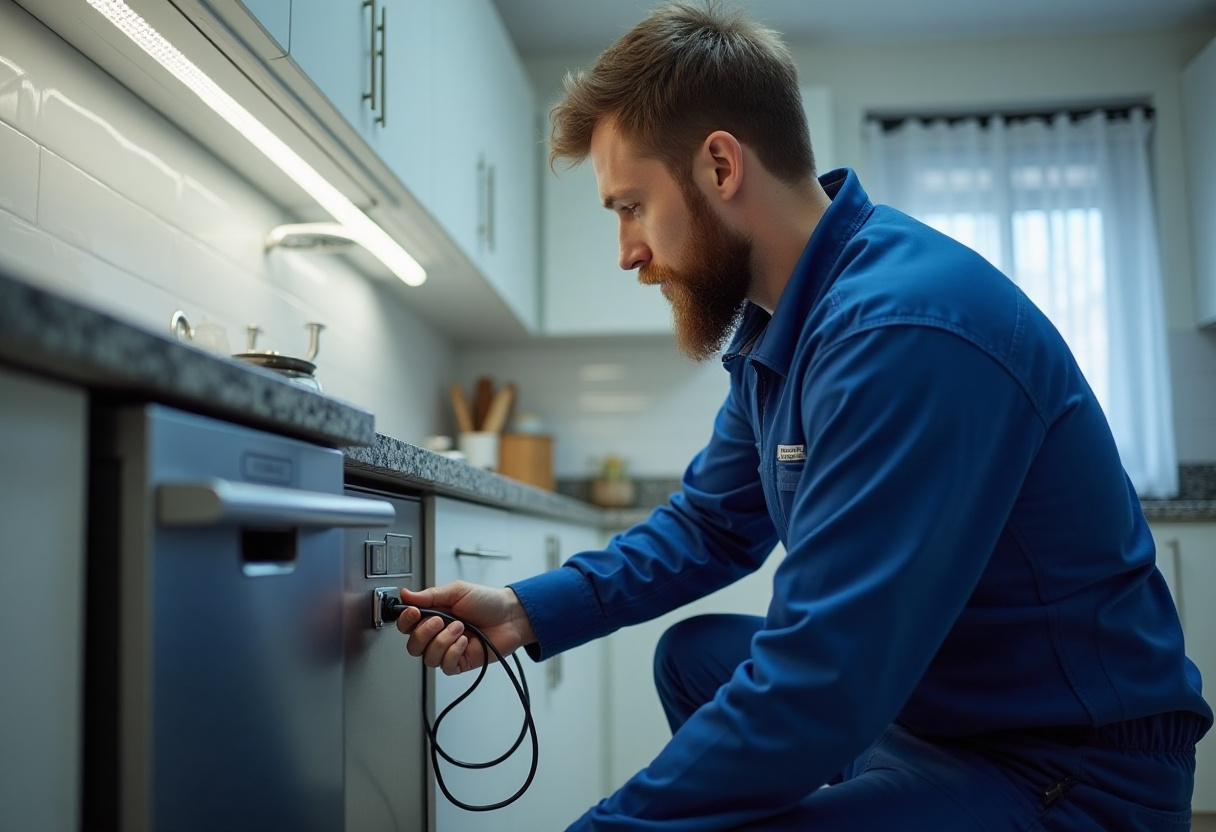
Unplugging a stainless steel dishwasher (Source: AZParts)
3.2. Step 2: Check and Reset the Control Panel
Inspect the control panel for any error codes, blinking lights, or unusual messages that might point to a specific issue. Clean the panel gently with a damp cloth to remove moisture or grime that may interfere with button responsiveness.
Press each button to check if it responds properly—unresponsive or sticky buttons may prevent the dishwasher from starting. Try cleaning around the button edges if necessary.
Some Whirlpool models have a specific reset sequence (not just turning the power off and on), so check your user manual for detailed instructions. Document any error codes or unusual behavior for reference, especially if you later need technical support.
3.3 Step 3: Inspect the Door Latch Mechanism
The dishwasher won’t start unless the door is properly closed and latched. Open and close the door several times, paying attention to how the latch engages. You should hear a solid "click" when it locks into place.
Clean the latch and surrounding area thoroughly to remove food particles, detergent residue, or grime that might prevent it from working smoothly. Use a soft brush or cloth.
If the latch appears to work but the unit still doesn’t start, the issue could lie with the door sensor or switch, which requires electrical testing and may need a professional to repair or replace it.
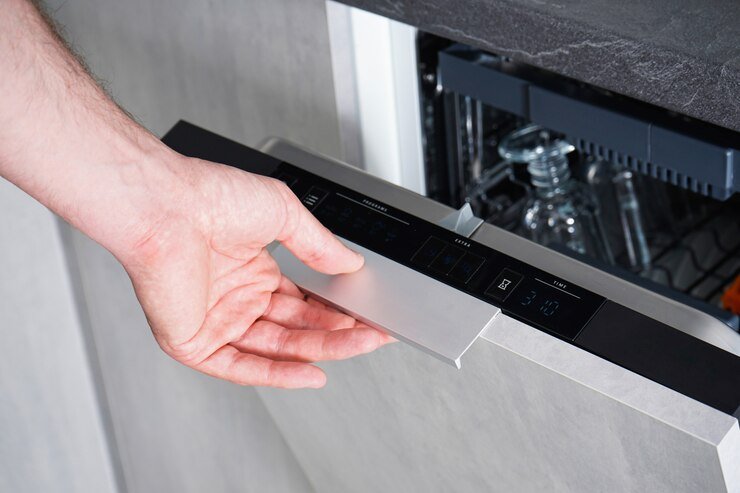
Open and close the door several times (Source: Freepik)
3.4 Step 4: Examine the Water Inlet Valve
The water inlet valve controls the flow of water into the dishwasher. Before inspecting it, make sure the dishwasher is unplugged and the water supply is turned off. Locate the valve, usually behind the lower front panel.
Check for visible signs of damage, mineral buildup, or corrosion that may block water flow. Also inspect the water line connections—tighten any loose fittings, but avoid over-tightening.
When attempting to run a cycle, listen for a humming or clicking sound that indicates the valve is opening. If there's no sound, the valve might be clogged, disconnected, or failed. This type of repair usually involves both plumbing and electrical components and may require professional help.
3.5 Step 5: Run a Diagnostic Cycle (If Available)
Many newer Whirlpool dishwashers come equipped with a built-in diagnostic mode that can help identify component issues. Refer to your owner's manual for the correct button combination to enter diagnostic mode.
Once activated, the dishwasher will test critical parts like the inlet valve, drain pump, wash motor, and heating element. Watch for error codes that appear on the control panel—these codes can pinpoint the exact issue.
Write down any error codes shown. Some issues may be easy to resolve with cleaning or resetting, while others will need a technician. Running a diagnostic cycle helps you determine the next steps more confidently.
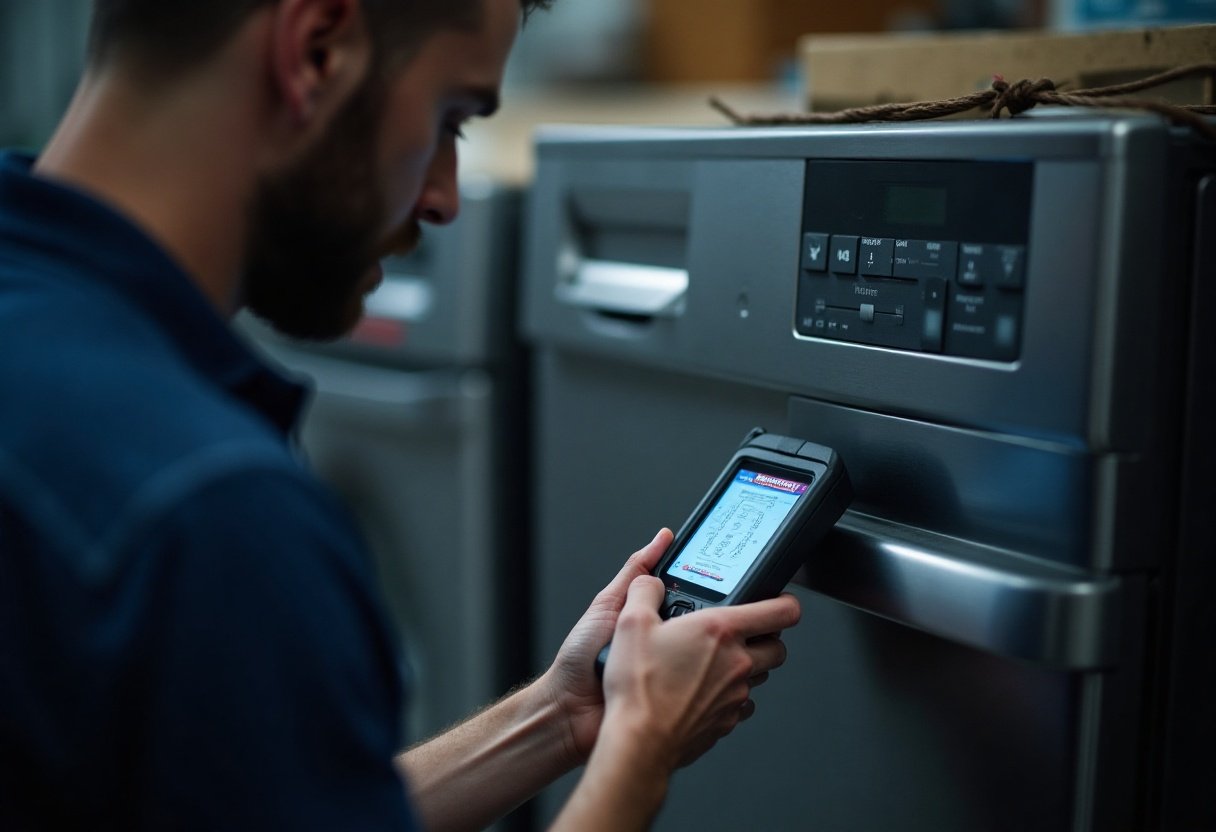
Using handheld diagnostic tool on Whirlpool dishwasher, showing real-time data on screen (Source: AZParts)
4. Frequently Asked Questions (FAQs)
4.1 Why is my Whirlpool dishwasher beeping but not starting?
A beeping dishwasher that won't start typically indicates an error condition or user input problem. The beeping pattern often corresponds to specific error codes that identify the underlying issue. Common causes include an improperly latched door, activated control lock, or system error requiring a reset. Check your owner's manual to interpret the specific beeping pattern, as different sequences indicate different problems. Try resetting the power and ensuring the door is properly closed before attempting to start the cycle again.
4.2 Can a faulty door switch cause my dishwasher not to start?
Yes, a malfunctioning door switch is one of the most common causes of dishwasher startup failure. The door switch is a safety mechanism that prevents the dishwasher from operating when the door is open or improperly latched. If the switch fails to detect a properly closed door, it will prevent the dishwasher from starting as a safety precaution. This issue typically requires professional diagnosis and switch replacement, as it involves electrical testing and precise component installation to ensure proper safety function.
4.3 Is there a reset button on Whirlpool dishwashers?
Most Whirlpool dishwashers don't have a dedicated physical reset button. Instead, you can reset the unit by disconnecting power for several minutes or by using specific button combinations on the control panel. The exact reset procedure varies by model, but typically involves pressing and holding certain buttons like "Start" and "Cancel" simultaneously. Some models require you to press buttons in a specific sequence or hold them for a predetermined time. Always consult your owner's manual for the correct reset procedure for your specific model.
4.4 Do Whirlpool dishwashers have fuses or thermal switches?
Yes, many Whirlpool dishwashers contain internal fuses and thermal switches that protect electrical components from damage due to power surges or overheating. These safety devices are typically not user-replaceable and require professional service when they fail. Thermal switches protect motors and heating elements from overheating, while fuses protect against electrical surges. If these safety devices trip or blow, the dishwasher will not start until they are properly reset or replaced by a qualified technician.
4.5 How do I know if the capacitor or control board is bad?
Control board and capacitor failures often produce specific symptoms that help identify these component problems. A bad control board may cause erratic behavior, unresponsive controls, or display errors that don't correspond to actual system problems. Capacitor failure typically affects motor operation, causing the dishwasher to hum without starting or producing unusual sounds during operation. These components require professional diagnosis using specialized testing equipment, as they involve complex electrical measurements and safety considerations that exceed typical homeowner capabilities.
5. Final Tips to Avoid Dishwasher Startup Issues in the Future
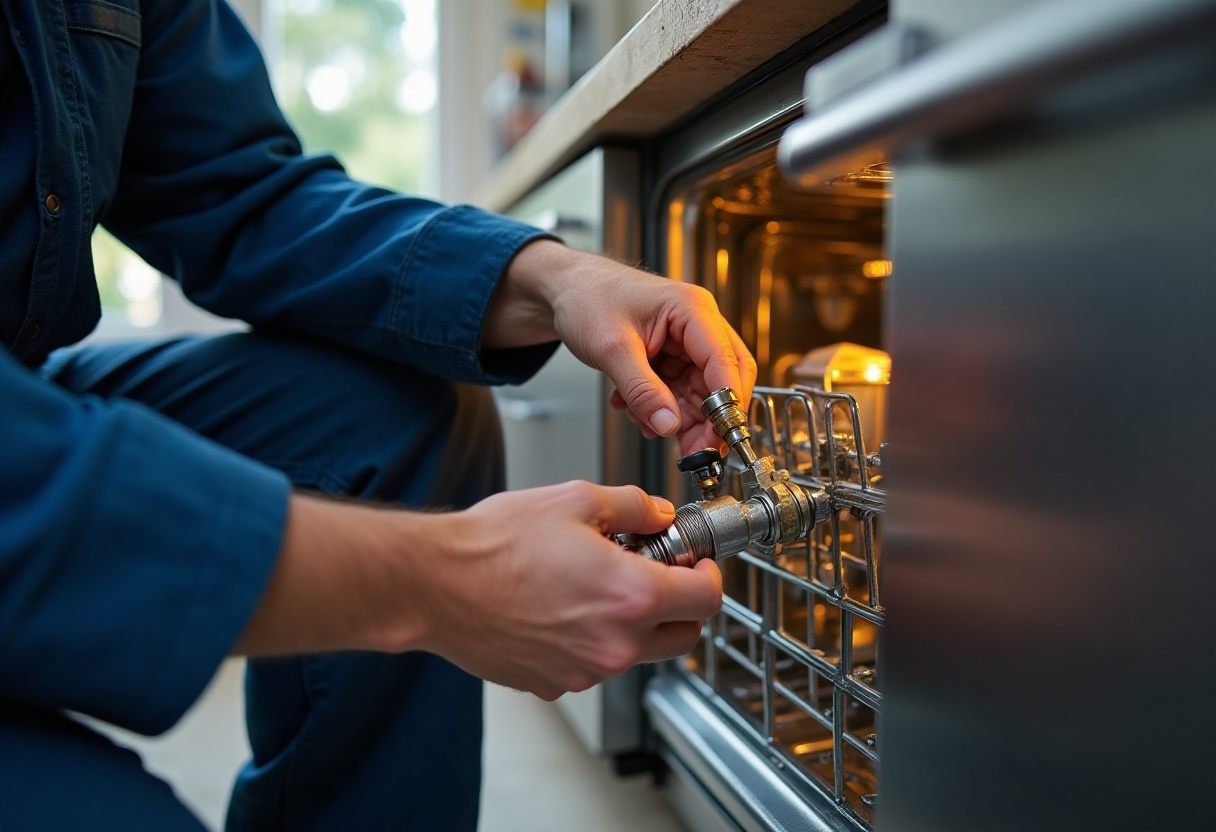
Regular periodic check-ups by a qualified person (Source: Freepik)
Simple maintenance habits can prevent most dishwasher startup problems and save you money on repairs. Follow these easy tips to keep your Whirlpool dishwasher running smoothly:
- Clean the filter regularly: Remove and rinse your dishwasher filter every 2-3 weeks under hot water. Use a soft brush to scrub away food debris. A clean filter keeps water flowing properly and protects your dishwasher's motor.
- Close the door promptly: Don't leave the dishwasher door open too long after loading dishes. Extended moisture exposure can damage electrical parts and cause door latch problems.
- Check connections quarterly: Inspect electrical wires, water connections, and look for leaks or rust every 3-6 months. Early detection prevents expensive emergency repairs.
- Keep controls clean and dry: Wipe the control panel regularly with a damp cloth, but avoid getting water inside buttons or displays. Moisture in electronics causes startup failures.
- Schedule annual maintenance: For heavily used dishwashers, have a professional check your appliance yearly to spot problems before they cause breakdowns.
A Whirlpool dishwasher that won’t start can disrupt your daily routine, but with systematic troubleshooting and the right replacement parts, most issues can be resolved effectively. From simple problems like an activated control lock to more complex malfunctions involving water inlet valves or electrical components, understanding the possible causes helps you take the right course of action.
Remember, safety should always come first when working with electrical appliances. If you're unsure, it’s best to consult qualified professionals who have the tools and expertise to diagnose and fix issues properly.
At AZParts, we’re committed to helping you keep your appliances in top shape. We offer a wide selection of genuine Whirlpool dishwasher parts and other Whirlpool parts or general dishwasher components—from filters and racks to circuit boards and pumps. Whether you're replacing a single component or tackling a bigger repair, AZParts provides the quality parts and expert guidance you need to get your dishwasher running like new again.
Contact Information:
8 The Green, Ste A, Dover, Delaware 19901-3618, United States
Diswasher
Further Reading
Further Reading





_1751943331.jpg&w=3840&q=75)